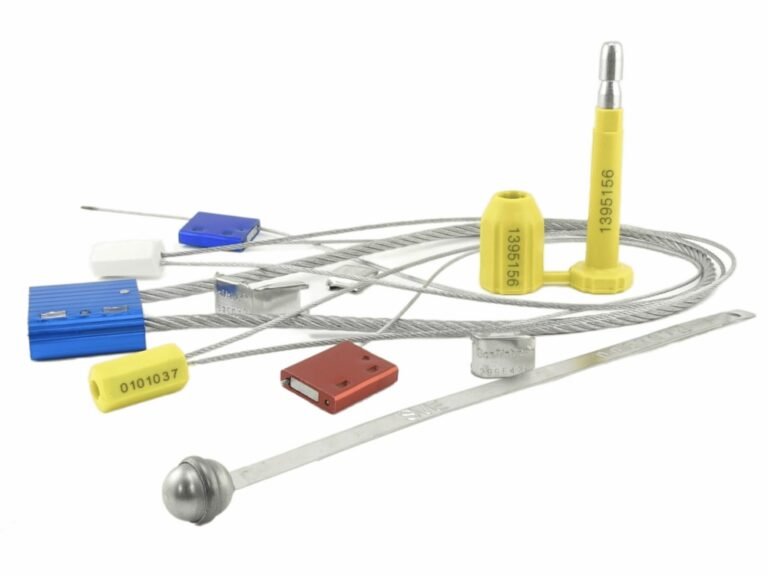Are you using zip ties to secure your assets, believing it's a savvy, low-cost security measure? This common mistake creates a dangerous illusion of safety, leaving you completely blind to theft and tampering.
The secure alternative is a uniquely numbered plastic security seal. While a zip tie is made for bundling, a security seal is engineered for one mission: to provide clear, irreversible evidence of access, making it a true tool for tamper evidence.
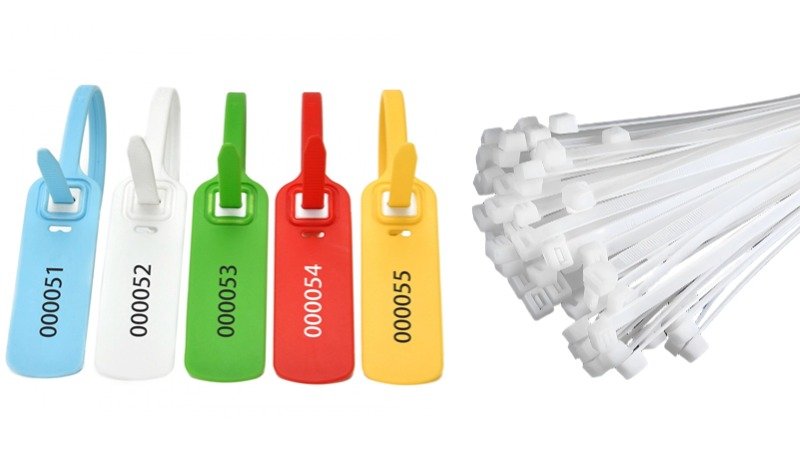
In my twenty years in this industry, I have come to a simple conclusion: zip ties and security seals are not competitors. They are tools designed for completely different missions. A zip tie's mission is "bundling." Its design is all about convenience—it's cheap, replaceable, and uniform.
A security seal's mission is "testifying." Every detail in its design is about creating uniqueness and leaving behind irreversible evidence. Using a zip tie for security is like using tape to fix a leaky pipe. It might give you a brief, false sense of security, but a catastrophic failure is inevitable.
Zip Ties Bundle, Security Seals Protect: Understanding the Core Design Difference?
Do you believe that because a zip tie locks, it provides security? This fundamental misunderstanding of its design purpose is the most critical vulnerability in many companies' security protocols.
A zip tie is mass-produced for convenience and uniformity; any zip tie can replace another. A security seal is uniquely engineered with serial numbers and tamper-evident features to create a one-of-a-kind link in your chain of custody.
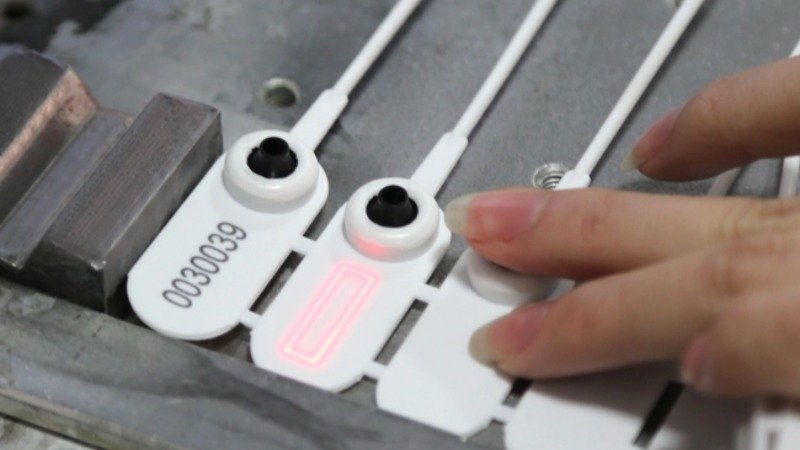
Let's break down their core missions. The entire engineering philosophy behind a zip tie is disposability and replaceability. You can buy ten thousand of them that are physically identical. This is a feature for bundling cables, not a bug. In contrast, a security seal's primary feature is its uniqueness. Even the simplest plastic seal has a unique serial number that is tracked from production. Its job isn't to be the strongest barrier, but to be an unimpeachable witness.
If seal #12345 is broken and replaced with #12346, you have positive, documented proof of tampering. With a zip tie, a thief can cut it, access your goods, and replace it with an identical one. You will never know you were compromised.
What Is the Stronger, More Secure Alternative to Zip Ties?
Are you looking for a simple, low-cost solution that actually provides real tamper evidence? Simply swapping a zip tie for a slightly stronger piece of plastic isn't the answer if it can be easily replaced.
The only true alternative is a sequentially numbered indicative security seal. While similar in material and application, its unique serial number makes it impossible to be cut and replaced without leaving a clear record of the event, offering true tamper-evident protection.
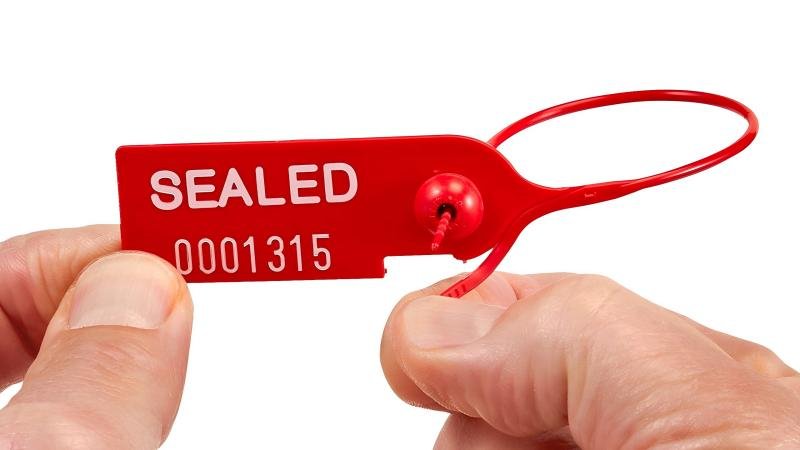
When a client asks for a direct upgrade from a zip tie, I don't point them to a stronger material; I point them to a smarter design. A basic plastic pull-tight seal is the perfect starting point. It's applied just like a zip tie but comes with a crucial advantage: a unique, laser-engraved serial number. This one feature changes everything. It elevates the device from a simple fastener to a data point in your security protocol. The process becomes: record the number on the manifest at origin, and verify that exact same number is present and the seal is intact at the destination. A thief can't buy an identical replacement at a hardware store. This simple, low-cost shift in tools creates a powerful and verifiable security process.
At a Glance: Zip Ties vs. Security Seals on Cost, Compliance, and Security?
Is the low upfront cost of zip ties blinding you to their hidden risks and limitations? A quick-and-dirty cost comparison often fails to account for the most important factors in a real-world business environment.
While zip ties are cheaper per unit, security seals provide immense value in security, traceability, and compliance, which are essential for professional operations. A side-by-side comparison makes the strategic choice clear.
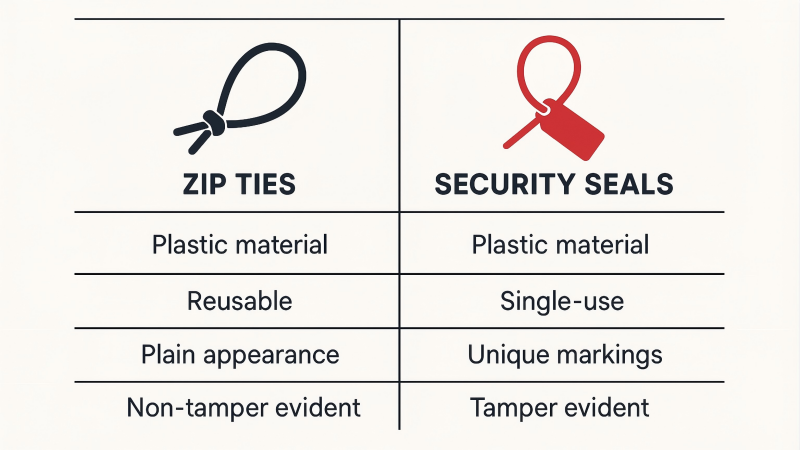
I often sit down with procurement managers and sketch out a table like this one. It moves the conversation away from just "price per piece" and toward a more holistic view of total cost of ownership. The few cents saved on a zip tie are instantly erased by a single undetected theft, a failed audit, or a rejected international shipment. For any serious business, the choice becomes self-evident once you look at the full picture. A security seal isn't a more expensive zip tie; it's a completely different tool that delivers a return on investment through risk reduction and process integrity.
| Feature | Zip Tie | Security Seal |
|---|---|---|
| Primary Mission | Bundling & Fastening | Testifying & Evidence |
| Uniqueness | None (Mass Produced) | High (Unique Serial Number) |
| Tamper Evidence | None (Easily Replaced) | High (Shows Proof of Entry) |
| Regulatory Compliance | None | Meets standards like ISO 17712 |
| Cost Per Unit | Very Low | Low to Moderate |
| Security Value | Negligible | High |
How to Choose the Right Option: A Risk-Based Framework for Your Business?
Are you struggling to decide when a simple zip tie is acceptable and when a security seal is non-negotiable? Making this decision on a gut feeling is a recipe for inconsistency and security gaps across your operations.
Use a simple risk-based framework. Analyze the "Consequence of Compromise" for each application. If the consequence is low, a zip tie may be fine. If the consequence is high, you must use a security seal.
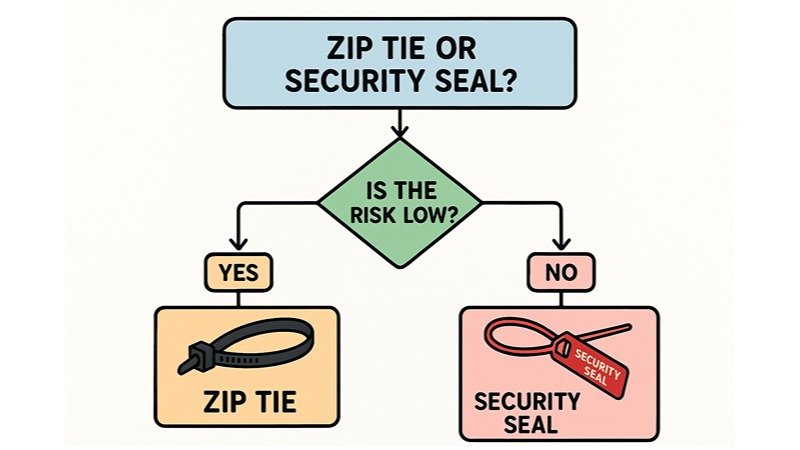
This is how I advise my clients to create a clear, fleet-wide policy. We ask one simple question: "What happens if someone opens this without our knowledge?"
- Case 1: Securing a hubcap to a wheel. The consequence of compromise is low. If it falls off, you replace it. A zip tie is a perfectly acceptable tool for this bundling mission.
- Case 2: Securing a fire extinguisher cabinet. The consequence of compromise is high. If the extinguisher is used or stolen and you don't know it, you fail a safety audit and put lives at risk. You need a uniquely numbered seal to prove the cabinet has been untouched since the last inspection.
- Case 3: Securing a trailer of pharmaceuticals. The consequence of compromise is catastrophic, involving financial loss, regulatory fines, and public danger. A high-security bolt seal is the only acceptable choice. It's that simple. Define the consequence, define your tool.
The True Cost of a Compromise: Why a Security Seal Is an Investment, Not an Expense?
Do you view security seals as an unfortunate but necessary line item in your budget? This "expense" mindset misses the bigger picture and focuses on saving pennies while risking thousands of dollars.
The $0.20 you spend on a plastic security seal is not an expense; it is an investment that protects you from the $10,000 loss of an undetected theft. It buys you data, certainty, and control over your supply chain.
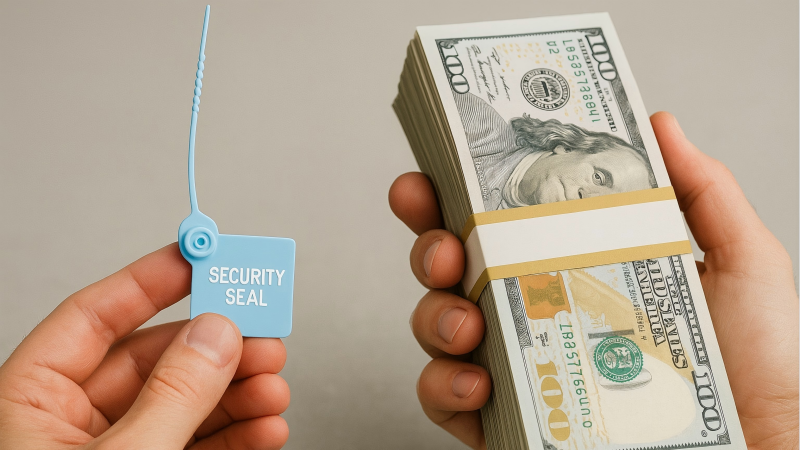
I once worked with a regional food distributor who was experiencing inventory shrinkage on their delivery trucks. They were using cheap zip ties on their roll cages. The cost of the missing product was running into thousands of dollars every month. We replaced the zip ties with basic, uniquely numbered plastic seals and implemented a simple log-in/log-out sheet for the seal numbers. Within one month, the shrinkage stopped completely. The total cost of the seals was a tiny fraction of what they were losing. They weren't just buying a piece of plastic; they were buying a system of accountability. That's the difference between an expense and an investment.
Conclusion
Stop using a bundling tool for a security mission. While zip ties fasten, only uniquely numbered security seals can truly testify to the integrity of your assets, providing the tamper evidence your business needs.
Upgrade from Uncertainty to Evidence
ProtegoSeal provides security seals that deliver certainty. We can help you assess your risk and choose the right, cost-effective seal for your needs. Contact me to get samples and see the difference an investment in evidence can make.

